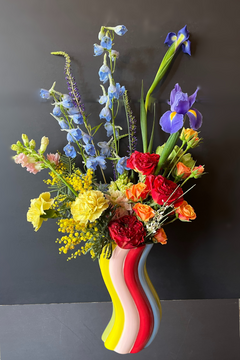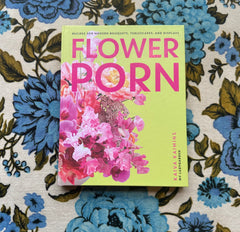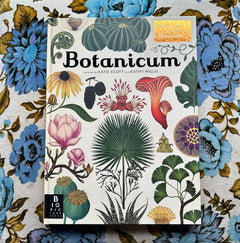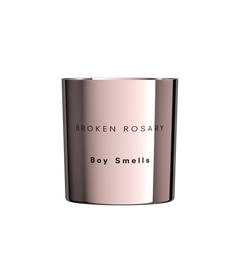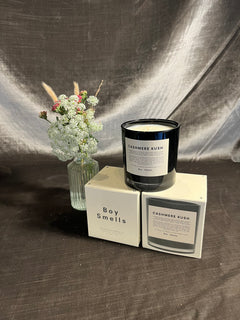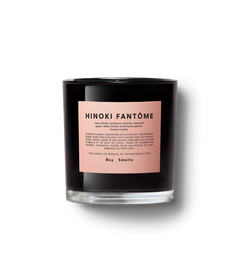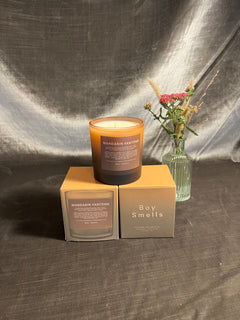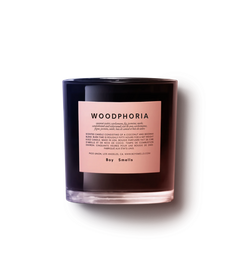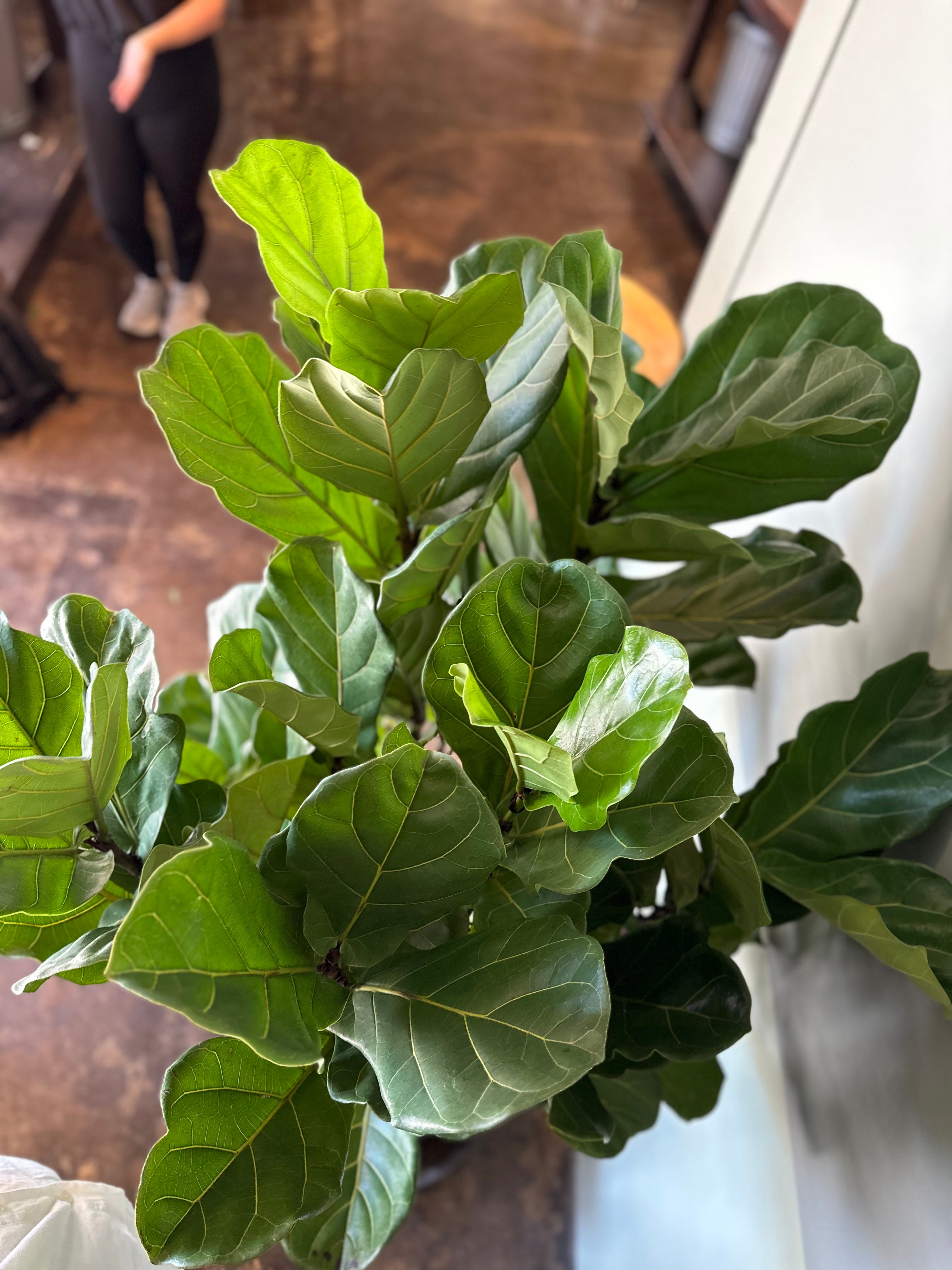
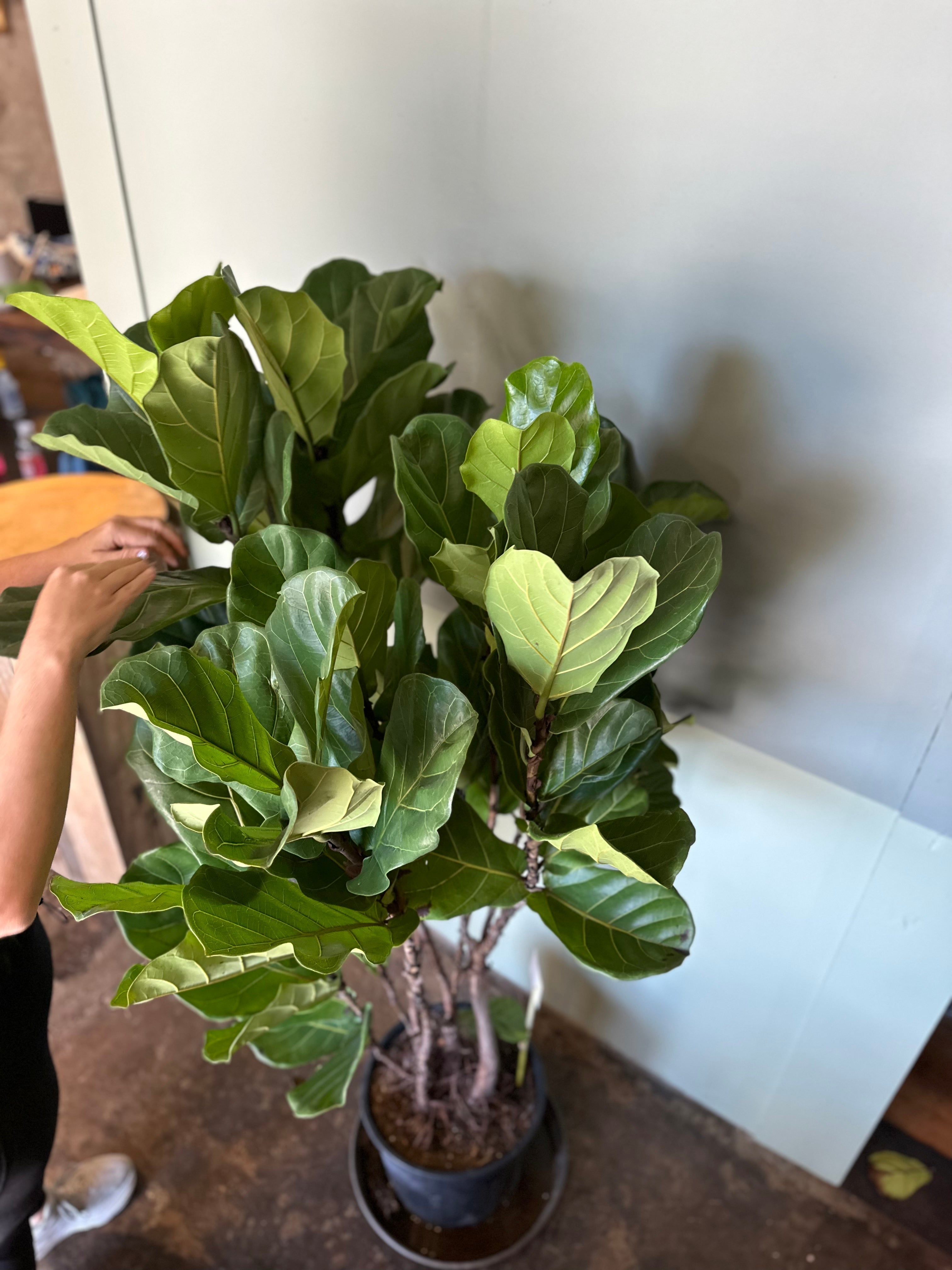


ficus lyrata (fiddle leaf fig)
- Description
- faq
a little about me…
ficus lyrata, commonly known as the fiddle-leaf fig, is a species of flowering plant native to western africa. the fiddle leaf fig is total eye candy! this houseplant is lush, tall, columnar and sculptural. the good news is that although finicky at times, once acclimated, it will flourish can grow to 6 feet or taller.
make sure that your window is properly sealed. figs are used to the still, warm conditions of the rainforest. cold drafts from windows, doors, and air-conditioning units may cause its leaves to dry out and drop.
s u n
give it bright, consistent light— preferably by a sunny window. turn the plant every few months once it begins to lean toward the light.
w a t e r
water only when you stick your finger in the soil and it is dry to your second knuckle. when the time comes, water thoroughly (until the water drains into the saucer) and allow to dry out again. if plants don’t get enough water, new leaves will turn brown and drop; on the other hand, if they are overwatered, the oldest leaves (toward the base of the plant) will turn brown and fall off. she loves high humidity and would do well with a spritz or a pebble tray nearby.
t o x i c i t y
as a ficus, it is toxic to pets and humans if consumed
delivery
we offer delivery to paducah and the surrounding areas monday- saturday. orders must be placed by 1pm for same day delivery mon-fri and 12 pm for same day delivery on saturday.
delivery fee is based on mileage from the shop.
0-1 miles $5
1-5 miles $10
5-10 miles $15
10-15 miles $20
please call the shop for deliveries outside of our delivery area and we will accommodate if possible.
delivery contact info
we ask for recipient phone number and information in case of delivery problems. our delivery driver will make every attempt at keeping your delivery a surprise, we promise. if there is no answer at the door, a text message will be sent to the recipient letting them know of the delivery and it will be placed in a safe location. if the driver deems that there is no safe location, it will be brought back to the store for pick up or redelivery. if redelivery is needed, an additional delivery charge may be added.
return policy- fresh florals
we do everything we can to provide fresh, beautiful florals. that being said, it’s important to remember that fresh flowers are delicate and require care. included with each wrap or arrangement is a care card with instructions on how to keep your florals fresh for as long as possible. if you are not satisfied with the longevity of your arrangement, please email us within 72 hours of pickup or delivery date. we ask that you include photos and a description of quality issue. in the event of a valid quality issue, an exchange for a new bouquet or arrangement will be made. we do not offer refunds. we also cannot offer refunds based on taste or preference. if no requests are made, the designers will use the freshest and prettiest flowers. this allows us to create beautiful, unique arrangements. please remember that art is subjective. we take pride in everything we send out. unless there is a quality issue with the life of the flowers, we cannot offer refunds or replacements.
return policy- indoor plants
we take every precaution to keep plants healthy while they’re in store. we can’t control the conditions after they leave. we are unable to refund plant purchases. care cards are offered with purchase to give you information on how best to care for your plant. if you get home and find that your plant has bugs or has root rot, please email us with photos and a description within 72 hours of purchase. in the event of a valid quality issue, a new plant or equal exchange will be made
- Related products
- Recently viewed



